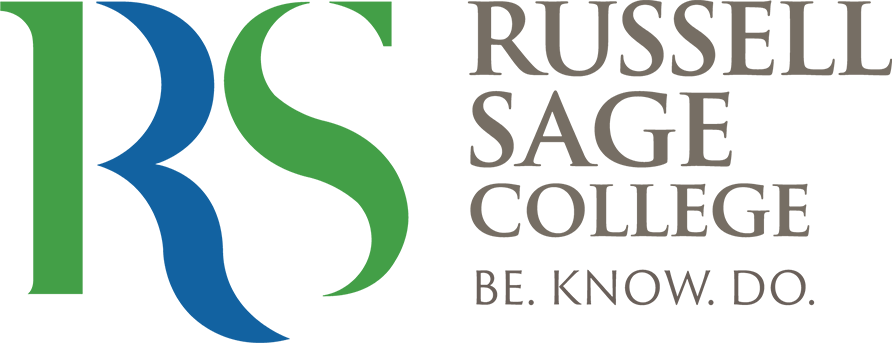Federal Student Loan Forgiveness Plan Information
On August 24, President Biden announced a plan to forgive up to $20,000 of federal student loan debt for Pell Grant recipients, and up to $10,000 for other qualifying borrowers. Biden also extended the federal student loan payment pause through December 31.
This is welcome news for Russell Sage College alumni, students, and all members of our community and their families. Below, you’ll find information about the loan forgiveness program that may be helpful to you. We will update this page as more details are released by the U.S. Department of Education. Please note that the details below are subject to change.
Some of the highlights of the program are:
- Borrowers who received Federal Pell Grants are eligible to have $20,000 in student loans forgiven if they are earning less than $125,000, or $250,000 per household.
- Other borrowers (who did not receive Pell Grants) are eligible to have $10,000 forgiven if they meet the income criteria above.
- The U.S. Department of Education will have income data for any borrowers who completed a FAFSA in 2021-22. Borrowers who were dependent students in the 2021-22 year will be eligible for relief based on parental income, rather than their own income.
- For those borrowers for whom the Department of Education doesn’t have existing income data, an application will be available in October.
- Current students are eligible if they (or their parents, if students are dependent) meet the income criteria.
- Federal student loans, PLUS Loans, and Grad PLUS loans are eligible for forgiveness, and will be capped at either $10,000 (for those without Pell Grants) or $20,000 (for those who received Pell Grants).
- Loans must have been fully disbursed by June 30, 2022.
What can borrowers do now?
- Sign up for updates from the Department of Education.
- Review the income eligibility requirements as outlined in the August 24 announcement. For information, complete an application that the Biden administration will launch in the coming weeks. The application will be available before the loan payment pause ends on Dec. 31. To be notified when the application is open, sign up for updates.
- Check your federal loan balance and Pell Grant award status by logging into your Federal Student Aid account online at studentaid.gov. Note: The Department of Education has a record of all prior federal student loan borrowing and Pell Grant recipients. You will not need documentation from Russell Sage College to document your federal loan or Pell Grant history.
- Additionally, if you work in public service or a non-profit organization, take advantage of the temporary limited Public Service Loan Forgiveness waiver. Borrowers must apply by October 31, 2022.
- Prepare to resume repayments in January 2023. If you aren’t eligible for forgiveness, or if the plan pays off only part of your loan balance, payments will resume after December 31, 2022.
Please note that this program is administered by the U.S. Department of Education, and not by Russell Sage College or any other college or university you may have attended.
We will update this information as we learn more.
Public Service Loan Forgiveness
What is Public Service Loan Forgiveness?
Public Service Loan Forgiveness (PSLF) Program forgives the remaining balance on your Direct Loans after you have made 120 qualifying monthly payments under a qualifying repayment plan while working full-time for a qualifying employer.
How do I qualify?
To qualify for PSLF, you must:
- Be employed by a federal, state, local, or tribal government or not-for-profit organization;
- Work full-time for that agency or organization;
- Have Direct Loans (or consolidate other federal student loans into a Direct Loan);
- Repay your loans under an income-driven repayment plan*; and;
- Make 120 qualifying payments
Who is a qualifying employer?
Qualifying employment for the PSLF Program isn’t about the specific job that you do for your employer. Instead, it’s about who your employer is. Employment with the following types of organizations qualifies for PSLF:
- Government organizations at any level (U.S. federal, state, local, or tribal) – this includes the U.S. military
- Not-for-profit organizations that are tax-exempt under Section 501(c)(3) of the Internal Revenue Code
- Serving as a full-time AmeriCorps or Peace Corps volunteer also counts as qualifying employment for the PSLF Program. Use our employer search tool to help determine if your employer qualifies for PSLF
- For-profit organizations, including for-profit government contractors
- Contractors: You must be directly employed by a qualifying employer for your employment to count toward PSLF. If you’re employed by an organization that is doing work under a contract with a qualifying employer, it is your employer’s status—not the status of the organization that your employer has a contract with—that determines whether your employment qualifies for PSLF.
For example, if you’re employed by a for-profit contractor that is doing work for a qualifying employer, your employment does not count toward PSLF.
- Other types of not-for-profit organizations: If you work for a not-for-profit organization that is not tax-exempt under Section 501(c)(3) of the Internal Revenue Code, it can still be considered a qualifying employer if it provides certain types of qualifying public services.
The following types of employers don’t qualify for PSLF:
- Labor unions
- Partisan political organizations
What is full-time employment?
For PSLF, you’re generally considered to work full-time if you meet your employer’s definition of full-time or work at least 30 hours per week, whichever is greater.
If you are employed in more than one qualifying part-time job at the same time, you will be considered full-time if you work a combined average of at least 30 hours per week with your employers.
If you are employed by a not-for-profit organization, time spent on religious instruction, worship services, or any form of proselytizing as a part of your job responsibilities may be counted toward meeting the full-time employment requirement.
What type of loans qualify?
Any loan received under the William D. Ford Federal Direct Loan (Direct Loan) Program qualifies for PSLF.
Loans from these Direct Loan programs don’t qualify for PSLF:
- Federal Family Education Loan (FFEL) Program and the
- Federal Perkins Loan (Perkins Loan) Program
However, they may become eligible if you consolidate them into a Direct Consolidation Loan. What counts as a qualifying payment?
- A qualifying monthly payment is a payment that you make
- after Oct. 1, 2007;
- under a qualifying repayment plan;
- for the full amount due as shown on your bill;
- no later than 15 days after your due date; and
- while you are employed full-time by a qualifying employer
How do I apply?
Use the PSLF Help Tool for all of the following:
- Check to see if your employer qualifies
- Certify your employment each year
- Apply for forgiveness once you’ve met all the requirements
- Generate your PSLF form for signing and submitting to the PSLF servicer
To learn more about PSLF, please visit Public Service Loan Forgiveness
Contact for PSLF Questions
If you have more questions, visit PSLF FAQ.
If your questions aren’t covered on that page, contact MOHELA at 1-855-265-4038.
Teacher Loan Forgiveness
This loan forgiveness program is provided to full-time teachers who have taught for five complete and consecutive academic years in a school serving students from low-income families. For more information, please review the Department of Education’s Teacher Loan Forgiveness overview. (Does not include PLUS loans.)
Fresh Start Initiative
What Is the Fresh Start Initiative?
The Department of Education is helping student loan borrowers who are in student loan delinquency or student loan default get a fresh start on their student loans after student loan payment pause through December 31, 2022 is lifted. Under the Fresh Start Program, borrowers whose federal student loans were delinquent or in default prior to the pandemic will be able to re-enter repayment in good standing.
What is student loan delinquency?
The first day after you miss a student loan payment, your loan becomes past due, or delinquent. Your loan account remains delinquent until you repay the past due amount or make other arrangements, such as deferment or forbearance, or changing repayment plans.
What is student loan default?
If your loan continues to be delinquent, the loan may go into default. The point when a loan is considered to be in default varies depending on the type of loan you received.
For a loan made under the William D. Ford Federal Direct Loan Program or the Federal Family Education Loan Program, you are considered to be in default if you do not make your scheduled student loan payments for at least 270 days.
For a loan made under the Federal Perkins Loan Program, the holder of the loan may declare the loan to be in default if you do not make your scheduled payment by the due date.
What type of loans qualify?
- Defaulted William D. Ford Federal Direct Loan (Direct Loan) Program loans
- Defaulted Federal Family Education Loan (FFEL) Program loans (both ED-held and commercial-held)
- Defaulted ED-held Perkins Loans
Loans not eligible for Fresh Start:
- Defaulted school-held Perkins Loans
- Defaulted Health Education Assistance Loan Program loans
- Student loans remaining with the U.S. Department of Justice (DOJ)
- Direct Loans and commercial-held FFEL Program loans that default after the end of the pause on student loan payments and collections
For more information, visit Fresh Start for Federal Student Loan Borrowers in Default.
If you are not sure whether your loans qualify, you can call the Default Resolution Group at 1-800-621-3115 (TTY for the deaf or hard of hearing 1-877-825-9923)
For more information
You can visit the Federal Student Aid website’s chart for a listing of the forgiveness and cancellation options that are available. Information is also outlined regarding all eligibility requirements.
In This Section
- How to Find College Scholarships
- What to Know About the New Free Application for Federal Student Aid (FAFSA)
- Approved Certificate Programs
- First-Year Tuition, Housing and Meals, Scholarships, and Financial Aid
- Transfer Tuition, Housing and Meals, Scholarships, and Financial Aid
- Graduate Tuition and Financial Aid
- Tuition & Fees
- Financial Aid Resources
- Graduate Assistantships
- State & Federal Aid
- Institutional Aid & Scholarships
- Financial Aid FAQ
- Meet the Financial Aid Staff
- Federal Student Loan Forgiveness Programs

